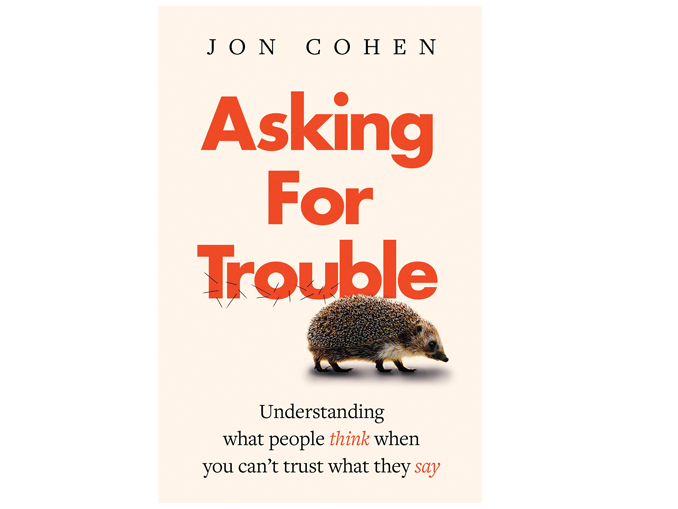Reviewed by Oana Popa Rengle, Founder, Anamnesis, Bucharest, Romania, oana@anamnesis.ro
One of the main qualities of good qualitative researchers is that they recognize the vital role intuition plays in providing critical appraisal of what is said, versus only relying on the literal interpretation of what the words actually mean.
Jon Cohen’s book provides a framework and conceptualization of what we might call “the sixth sense” of a good, experienced qualitative researcher in assessing “the truth” of what their participants are saying.
The book caters specifically to market researchers involved in testing stimuli, be it marketing ideas, product concepts, or prototypes. Cohen builds his entire argument around the existence of two very different worlds: “the world of asking” (full of traps he calls “illusions”) versus “the real world” (where the ideas tested have to perform). While there is a lot of literature in the marketing world about human biases and people’s inability to be accurate witnesses of their own behaviors and feelings, Cohen moves this conversation into the ouvre of research interviews, focus groups, and discussion guides. Moreover, he does it with the sensitivity and nuance of a highly experienced qualitative researcher, articulating the illusions to which researchers are susceptible when ignoring the fact that the very act of asking distorts the answer received.
Asking for Trouble provides a lot of material I wish I had known earlier in my career and can be a great resource for less-experienced researchers and for clients. However, it doesn’t mean it is of less value for more seasoned researchers such as me. I found it helpful in creating a framework around ideas and practices that are perhaps less formalized, e.g., guidance on how to push back when clients and other observers behind the mirror jump to the wrong conclusions.
The book has three main parts; I feel the “Understanding” section is the core. It focuses on the illusions, alongside suggestions about how to avoid them. The idea about whether research participants are truly interested in the topic being discussed is what Cohen believes to be the biggest illusion of them all. Cohen’s story about an entire group of participants escaping the research facility over the six-foot garden wall, incentive in their pockets, prior to probing, definitely drives home the point.
A second part focuses on “truth” and challenges whether the very fact of whether interviewers should aim for getting the absolute truth from people. He feels people will always operate in “the world of asking,” which will impede getting to the truth. Instead, we need to construct our own truth for the real world. Basically, it’s the magic of interpretation and analysis, but Cohen doesn’t simply call it magic and suggests a framework here, too. He proposes different research participants play different roles (supporter, developer, critic, disinterested), with each providing a different piece for the final puzzle.
The last section, “Good for Asking Guide,” focuses on elements outside the “content of the questions.” It addresses the researcher’s overall behavior and attitudes, with suggestions such as “embrace contradiction” and “don’t dismiss the disinterested,” the physical or digital setting of the research, developing stimuli, paralinguistics, and the language of asking.
One word of caution: the book is so loaded with research examples, stories, and concepts that at times it can be overwhelming, particularly for a beginner. It appears one of the primary aims of the author is to formalize what he is talking about. He therefore proposes a number of models in a range of formats using different symbolic worlds that sometimes feel unconnected to each other, e.g., the Wheel of Wonder, the A.C.I.D. test, the Marrakesh syndrome, the Golden Triangle.
This is definitely the kind of book to be read with a pen in hand for making notations.




